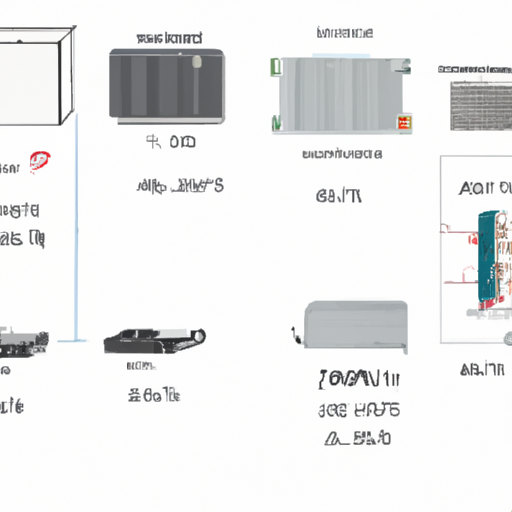When it comes to electrical products, DC and AC are two of the most common types of power sources used in various applications. DC, or direct current, flows in one direction and is commonly used in batteries and electronic devices. AC, or alternating current, changes direction periodically and is the type of power that is delivered to homes and businesses through power lines.

Voltage is one of the most important parameters to consider when choosing a DC or AC product. Voltage is the electrical potential difference between two points in a circuit and is measured in volts (V). DC products typically have a fixed voltage output, such as 12V or 24V, while AC products have a variable voltage output, such as 120V or 240V.
Current is another important parameter to consider when selecting a DC or AC product. Current is the flow of electric charge in a circuit and is measured in amperes (A). DC products typically have a fixed current output, while AC products have a variable current output that depends on the load connected to the circuit.
Frequency is a parameter that is specific to AC products. Frequency is the number of cycles per second of an AC waveform and is measured in hertz (Hz). In the United States, the standard frequency for AC power is 60Hz, while in Europe and other parts of the world, the standard frequency is 50Hz.
Power rating is a parameter that indicates the maximum amount of power that a DC or AC product can deliver. Power rating is typically measured in watts (W) and is calculated by multiplying the voltage and current of the product. For example, a product with a voltage of 12V and a current of 5A would have a power rating of 60W.
In the mainstream market, there are a wide range of DC and AC products available that cater to different applications and requirements. Some common DC products include batteries, power supplies, and solar panels, while common AC products include appliances, lighting fixtures, and power tools.
When selecting a DC or AC product, it is important to consider the specific parameters that are required for the application. For example, if you are looking for a power supply for a computer, you would need to consider the voltage and current requirements of the computer components. Similarly, if you are looking for a lighting fixture for your home, you would need to consider the voltage and power rating of the fixture.
In conclusion, understanding the parameters of DC and AC products is essential for selecting the right product for a specific application. By considering factors such as voltage, current, frequency, and power rating, consumers can make informed decisions when purchasing electrical products. With a wide range of DC and AC products available in the mainstream market, consumers have plenty of options to choose from to meet their electrical needs.
When it comes to electrical products, DC and AC are two of the most common types of power sources used in various applications. DC, or direct current, flows in one direction and is commonly used in batteries and electronic devices. AC, or alternating current, changes direction periodically and is the type of power that is delivered to homes and businesses through power lines.

Voltage is one of the most important parameters to consider when choosing a DC or AC product. Voltage is the electrical potential difference between two points in a circuit and is measured in volts (V). DC products typically have a fixed voltage output, such as 12V or 24V, while AC products have a variable voltage output, such as 120V or 240V.
Current is another important parameter to consider when selecting a DC or AC product. Current is the flow of electric charge in a circuit and is measured in amperes (A). DC products typically have a fixed current output, while AC products have a variable current output that depends on the load connected to the circuit.
Frequency is a parameter that is specific to AC products. Frequency is the number of cycles per second of an AC waveform and is measured in hertz (Hz). In the United States, the standard frequency for AC power is 60Hz, while in Europe and other parts of the world, the standard frequency is 50Hz.
Power rating is a parameter that indicates the maximum amount of power that a DC or AC product can deliver. Power rating is typically measured in watts (W) and is calculated by multiplying the voltage and current of the product. For example, a product with a voltage of 12V and a current of 5A would have a power rating of 60W.
In the mainstream market, there are a wide range of DC and AC products available that cater to different applications and requirements. Some common DC products include batteries, power supplies, and solar panels, while common AC products include appliances, lighting fixtures, and power tools.
When selecting a DC or AC product, it is important to consider the specific parameters that are required for the application. For example, if you are looking for a power supply for a computer, you would need to consider the voltage and current requirements of the computer components. Similarly, if you are looking for a lighting fixture for your home, you would need to consider the voltage and power rating of the fixture.
In conclusion, understanding the parameters of DC and AC products is essential for selecting the right product for a specific application. By considering factors such as voltage, current, frequency, and power rating, consumers can make informed decisions when purchasing electrical products. With a wide range of DC and AC products available in the mainstream market, consumers have plenty of options to choose from to meet their electrical needs.